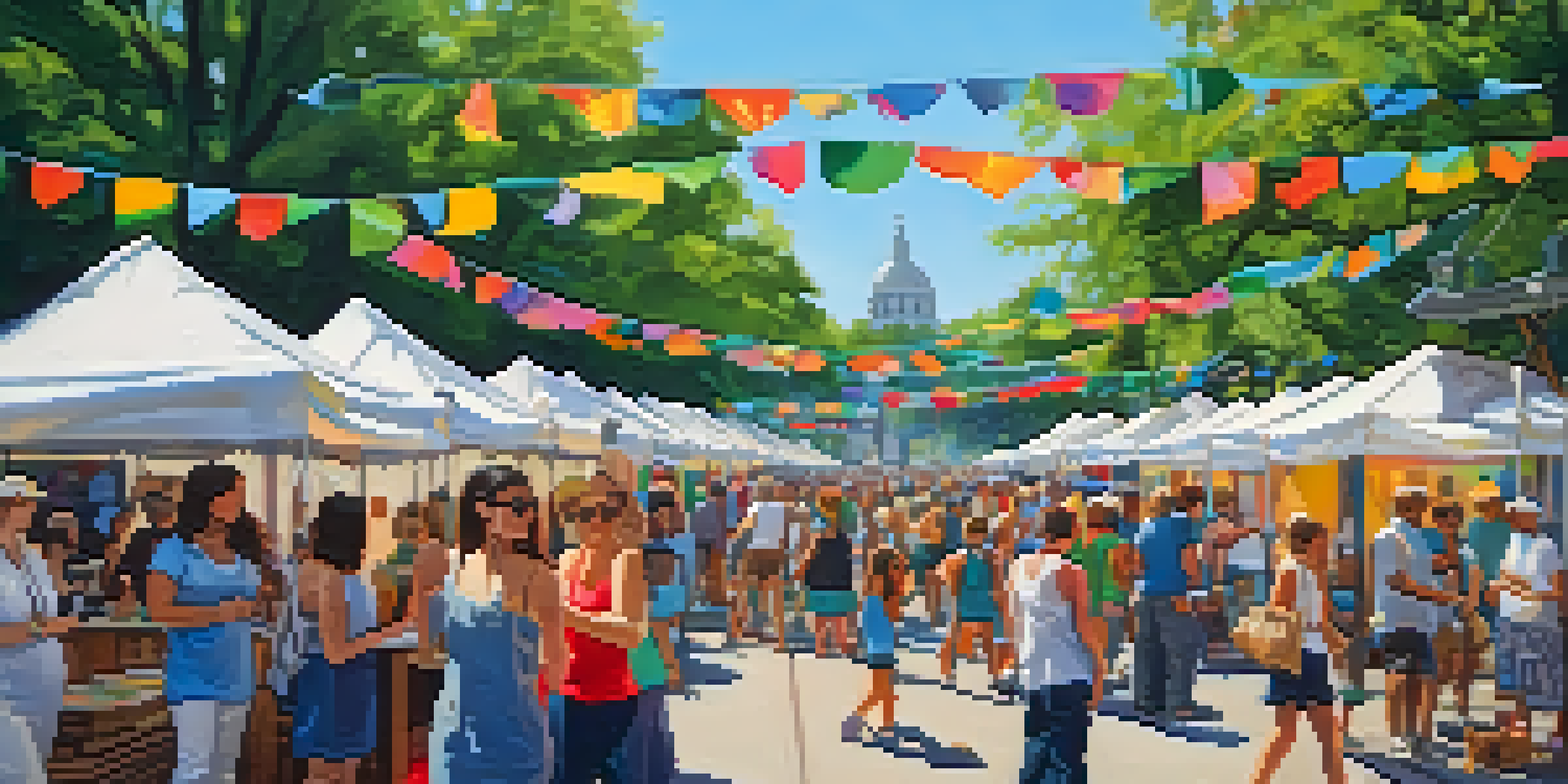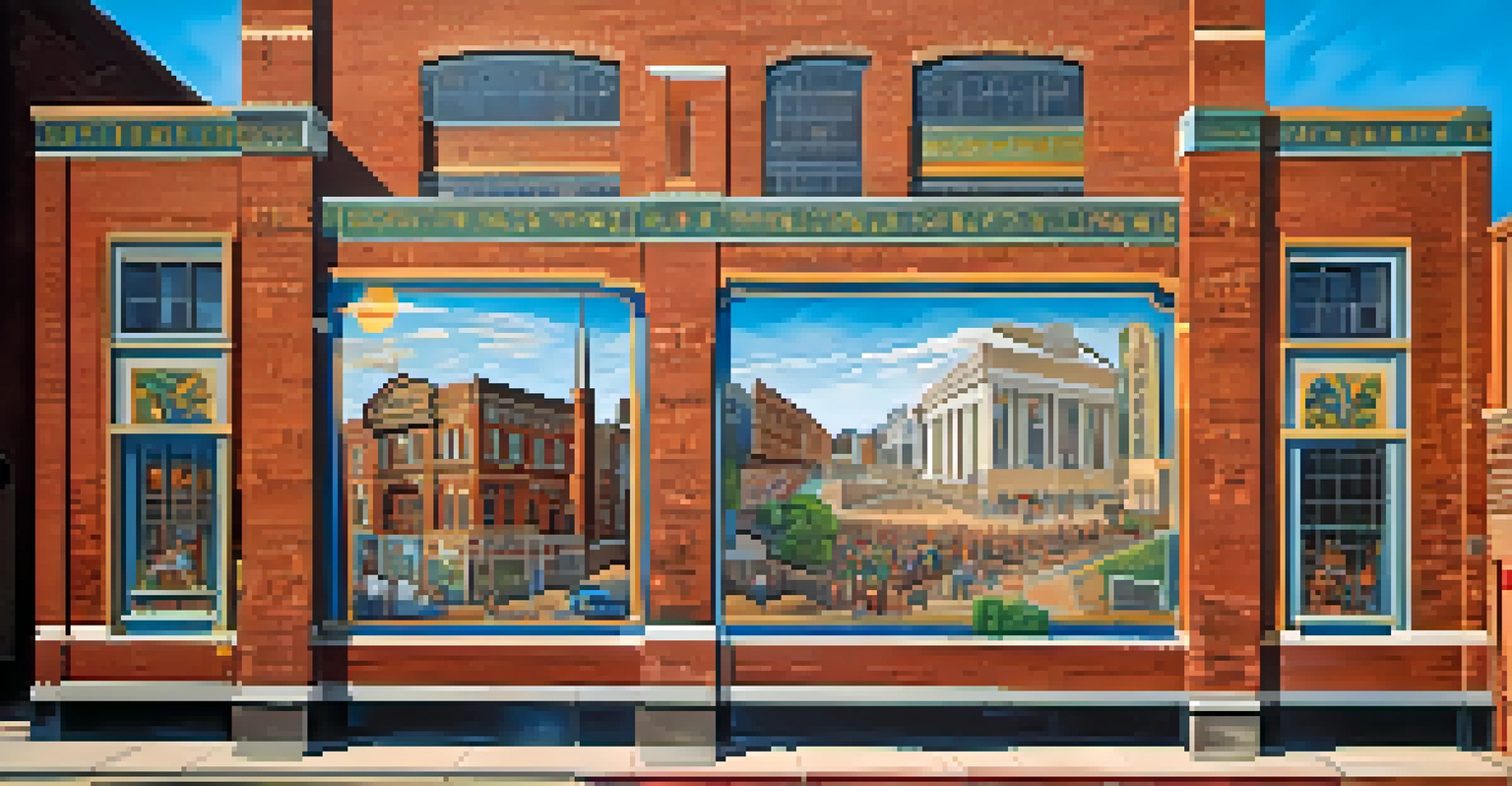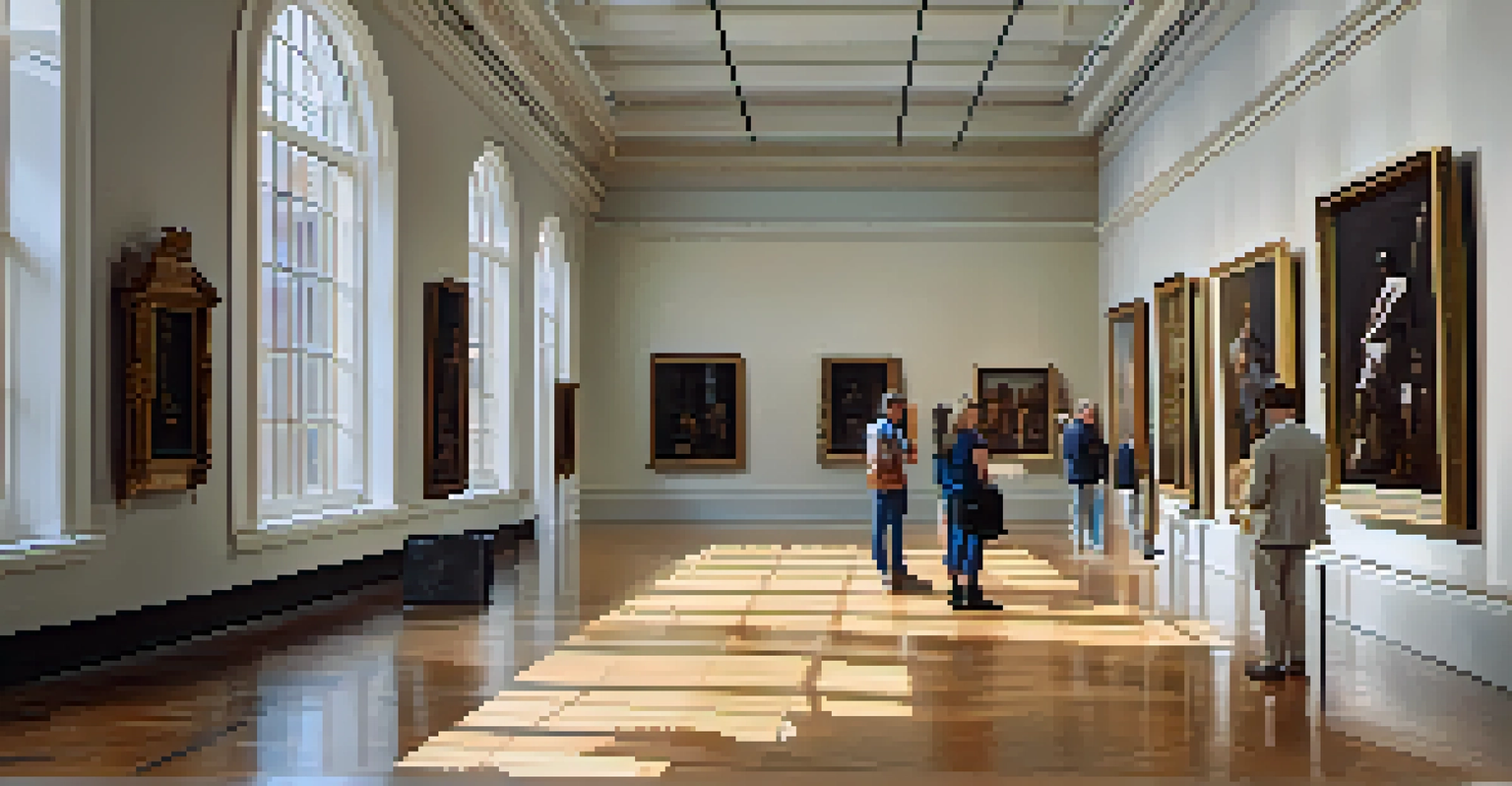The Influence of the St. Louis Art Scene on America

A Brief History of St. Louis' Art Scene
St. Louis has a rich artistic history that dates back to the early 19th century. Initially shaped by European immigrants, the city became a melting pot of artistic influences. This historical backdrop laid the foundation for what would become a thriving art scene, characterized by diverse styles and expressions.
Art enables us to find ourselves and lose ourselves at the same time.
Throughout the years, St. Louis has produced notable artists and movements, including the famous St. Louis School of painters in the early 20th century. Their innovative approaches to art began to draw national attention. As a result, the city established itself as an important hub for creativity and artistic exploration.
In recent years, St. Louis has continued to evolve, with a resurgence of interest in local artists and community engagement. Galleries, art fairs, and public installations have become more prominent, showcasing the city's talent. This vibrant atmosphere has made St. Louis a significant player in the American art landscape.
Key Art Institutions and Their Impact
The St. Louis Art Museum, founded in 1879, is one of the oldest and most prestigious institutions in the country. It houses an extensive collection that spans centuries and cultures, making it a vital resource for both local and national audiences. The museum's commitment to education and outreach has fostered a deeper appreciation for the arts in the community.

Another cornerstone of the St. Louis art scene is the Contemporary Art Museum St. Louis, which focuses on modern and innovative works. By providing a platform for emerging artists, this museum plays a crucial role in shaping contemporary art discourse. Its exhibitions often challenge traditional notions of art, encouraging viewers to think critically.
St. Louis Has a Rich Art History
The city's artistic landscape has been shaped by diverse influences since the 19th century, establishing it as a vibrant hub for creativity.
Furthermore, institutions like the Laumeier Sculpture Park and the Sheldon Concert Hall enhance the city's artistic offerings. These venues not only host exhibitions and performances but also engage the public through educational programs. Together, they contribute to a rich cultural tapestry that influences art appreciation across America.
St. Louis Artists Making Waves
The St. Louis art scene is vibrant not only because of its institutions but also due to its talented artists. Creatives like Bob Cassilly, known for his whimsical concrete sculptures, have placed St. Louis on the national art map. His work, blending humor with artistry, resonates with audiences far beyond the city limits.
The role of the artist is to make the world a better place by creating beauty.
Additionally, artists such as Jess T. Dugan are redefining contemporary photography, using their platforms to address important social issues. Dugan’s thought-provoking portraits challenge viewers to reconsider identity and representation. Their work exemplifies how St. Louis artists are influencing broader conversations in the art world.
As these artists gain recognition, they inspire the next generation of creatives in St. Louis. Local art schools and community programs are nurturing young talent, ensuring that the city's artistic legacy continues to thrive. This cycle of inspiration keeps the St. Louis art scene dynamic and relevant.
Public Art: A Reflection of Community Values
Public art plays a crucial role in the St. Louis art scene, serving as a reflection of community identity. Murals, sculptures, and installations dot the cityscape, often telling stories of local history, culture, and social issues. This art not only beautifies the environment but also sparks conversations among residents and visitors alike.
Projects like the St. Louis Mural Project focus on community engagement, inviting local artists to collaborate with neighborhoods. These initiatives foster a sense of pride and ownership, as residents contribute to the artistic narrative of their surroundings. This engagement deepens the connection between art and community values.
Public Art Reflects Community Values
Public art projects engage local artists and residents, fostering pride and transforming urban spaces into cultural hubs.
Moreover, public art acts as a catalyst for urban renewal, transforming neglected spaces into vibrant cultural hubs. As these projects flourish, they attract attention from both locals and tourists, showcasing St. Louis as a city committed to creativity and inclusivity. The ripple effect of public art is felt far beyond the city, inspiring similar movements across the country.
The Role of Art Festivals in St. Louis
Art festivals in St. Louis, such as the St. Louis Art Fair and the Big Muddy Blues Festival, play a vital role in showcasing local talent and fostering community spirit. These events bring together artists, musicians, and performers, creating a lively atmosphere that celebrates creativity. The festivals also serve as a platform for emerging artists to gain visibility and connect with a broader audience.
Attendees often find themselves immersed in a diverse range of artistic expressions, from visual arts to live performances. This exposure not only enriches the cultural fabric of St. Louis but also encourages collaboration among artists. The cross-pollination of ideas leads to innovative works that push the boundaries of artistic expression.
Moreover, these festivals attract visitors from outside the city, boosting the local economy and promoting St. Louis as a cultural destination. As art lovers flock to these events, they contribute to a vibrant arts ecosystem that promotes ongoing dialogue about the significance of art in society.
Art Education: Nurturing Future Generations
Art education in St. Louis is pivotal in nurturing the next generation of creatives. Institutions like the School of Art at Washington University provide rigorous training and exposure to various artistic disciplines. These programs emphasize the importance of critical thinking and creativity, equipping students with the tools needed to succeed in the art world.
Additionally, community initiatives aim to make art education accessible to all. Programs in underserved neighborhoods encourage young people to explore their artistic potential, fostering a sense of belonging and self-expression. By investing in future artists, St. Louis ensures that its vibrant art scene will continue to thrive.
Art Education Fuels Future Talent
Institutions and community initiatives in St. Louis are dedicated to nurturing young artists, ensuring the city's artistic legacy continues.
Workshops, mentorships, and collaborations with local artists further enhance the educational experience. As students engage with professionals, they gain valuable insights and inspiration, solidifying their commitment to pursuing art as a career. This dedication to art education ultimately enriches the cultural landscape of America.
The Future of St. Louis' Art Scene
Looking ahead, the future of the St. Louis art scene appears bright and full of potential. As the city continues to embrace innovation and diversity, new artistic movements will likely emerge. This evolution will not only reflect local culture but also resonate with national and global audiences, solidifying St. Louis' place in the art world.
Technology and social media are also shaping the future of art in St. Louis. Artists are leveraging these platforms to share their work, connect with audiences, and collaborate across borders. This digital presence expands the reach of local artists, enabling them to influence broader artistic conversations.

Ultimately, as St. Louis nurtures its artistic community and fosters inclusivity, it will continue to inspire and impact American culture. The legacies of past artists and institutions will pave the way for future creatives, ensuring that the St. Louis art scene remains a vital part of America's cultural landscape.